"Regulation has a very stifling effect on creativity," say O'Donnell and Tuomey
Interview: there aren't enough opportunities in Europe for talented young architects, according to Sheila O'Donnell and John Tuomey, who tonight receive the RIBA Royal Gold Medal.
Ahead of the awards ceremony at the Royal Institute of British Architects in London, the Dublin-based O'Donnell + Tuomey founders - who were named the 2015 recipients of British architecture's most prestigious award in September - spoke out against current procurement methods in Europe.
"The trouble is now that clients are checking to see how many times you have done something before," Tuomey told Dezeen in an exclusive interview. "And that might create two conditions: it might create people who are weary of doing the same bloody thing, and it might also give you people who have repeatedly done it wrong."
"But people who have never done it before will give it special attention," he added.
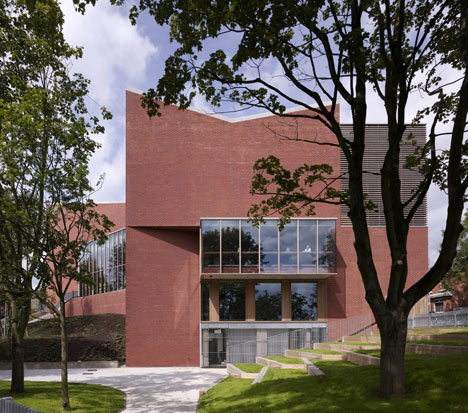
The Irish architects have had a record five buildings nominated for the RIBA's prestigious annual Stirling Prize for the best new building.
But Tuomey said that all of these projects – from the Ranelagh School in Dublin to the Lyric Theatre in Belfast – were typologies they were doing for the first time.
O'Donnell also revealed that even they have found it hard to win new university projects, despite having completed the Saw Swee Hock student centre at the London School of Economics last year.
"Even if you've only done something before once, that's often not enough," she said. "European regulation has, sometimes, a very stifling effect on creativity."
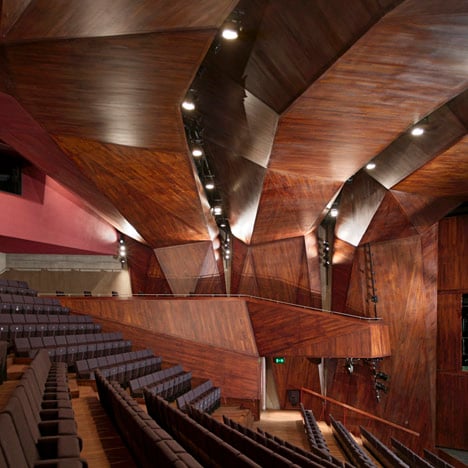
The pair first met while studying at University College Dublin. After a stint in London that included time in the office of James Stirling, they returned to Dublin in an uncertain financial climate, setting up their firm in 1988.
"We found ourselves back in Ireland at a really interesting time," said Tuomey. "Our first buildings came right out of activism – out of activism in culture, and out of activism for social change. That was the start of our practice."
Over 25 years later, even as the country struggles to recover from the most recent financial crisis, both architects believe the architectural culture is "really healthy and really strong", and that Dublin has the potential for "a really thriving culture", provided newly emerging architects are given a chance to shine.
"Now, in the recovery, it would be really proper if those gifted people would get access to the work," stated Tuomey.
"It would be a shame if it just reverted to business as usual. People don't always learn by their mistakes," he said. "It would be a pity if that was the case. There is an opportunity to be a bit more strategic or intelligent about the way things are made."
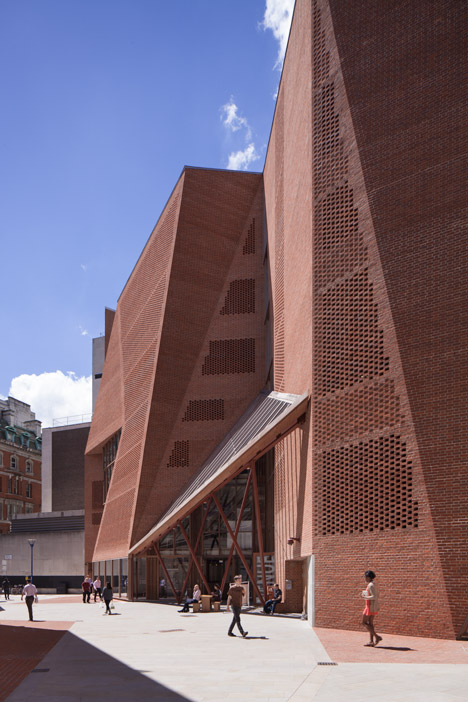
First awarded in 1846, the RIBA Royal Gold Medal is "conferred on some distinguished architect for work of high merit, or on some distinguished person whose work has promoted either directly or indirectly the advancement of architecture".
Other recent winners include critic Joseph Rykwert, Swiss architect Peter Zumthor and Dutch architect Herman Hertzberger.
Read the interview in full:
Amy Frearson: Congratulations on winning the Royal Gold Medal. Considering your history with Stirling Prize nominations, how important is it for you both to be recognised by the RIBA in this way?
John Tuomey: Well, the elusive Stirling Prize notwithstanding, I think this caps it, because the snare of awards is that you apply for them. You put your work together, you prepare it, you send it in, you hope it gets selected. It gets shortlisted and you're excited. But then you have to prepare yourself for the possibility that you won't be chosen. And when you do win something, the feeling is relief that you didn't lose it. Whereas with this medal you don't seek it, you're not told about it, you're not shortlisted for it; there are no finalists for it. You get a phone call and they offer it to you. And in that sense it is something out of the blue.
Sheila O'Donnell: And I think the fact that it's for a body of work and not for one building makes it feel more true, because you feel there's reflection involved in the selection, and there has been for us.
It's encouraging and it makes you feel like you must be doing something right. But maybe it's encouraging for us to continue working in the same way – because sometimes you feel up against it. Architecture, which is a wonderful profession, can also be quite difficult and quite stressed. And we, I suppose, were interested in the role of architecture in society and in the culture of a place. We don't see it primarily as a business, we see it as a social poetic art.
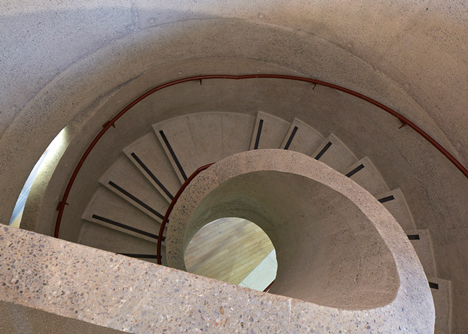
Amy Frearson: As you mentioned, this isn't just an award for one building, it is about a body of work. How would you sum up your approach and your architectural style?
John Tuomey: Back to basics. Start at the beginning. I think that's what we would like to do. We would like to do two things: one, pay attention to the discipline of architecture. Robert Frost said that all you have to do when you are writing a poem is be aware of every other poem that's ever been written. So I think we are very, very interested in the continuity of the culture of architecture.
And then we're also very prepared to be innocent or start off from first principles as if there was no background – I think a balance between awareness and beginning, a kind of discovery process. That's what we like to do. It might have an effect that our buildings don't always look like each other, so it's hard to spot. But we're exploring, I think.
Sheila O'Donnell: I think we're very interested in response to context, but that does not mean that we want our building to look like the ones next door. So we're interested in context in terms of lots of things, which maybe go beyond what it looks like. We've used the phrase "strangely familiar". We do want our buildings to feel familiar in the sense that they're in no way intimidating or threatening to people using them, but we also feel that new buildings should have a strange sense of new and different – that each should in some way affect people, that you would notice it and maybe hopefully feel inspired, or something.
So I definitely think style is not something we would think about. But meaning and context and rootedness in the place that it comes from is very important.
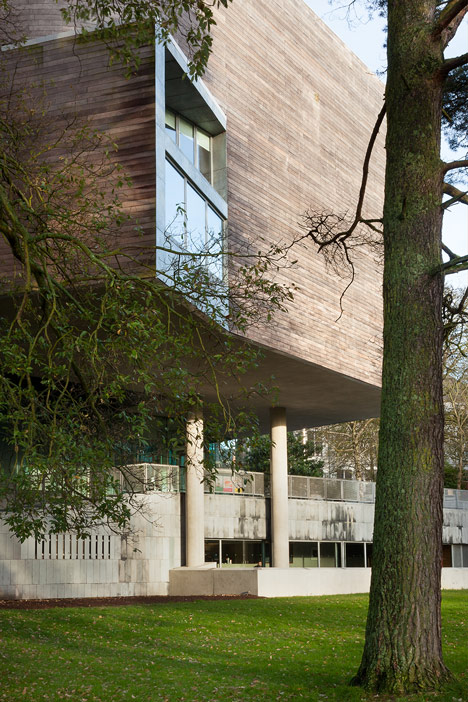
Amy Frearson: You set up your practice at the end of the 1980s. What was the thinking behind leaving London and setting up a studio in Dublin during a fairly difficult financial climate?
John Tuomey: Oh, I think it was the call – the sort of elastic band that is attached to every immigrant. People used to meet each other in the street and look each other in the eye and say: "Will you ever go back?" So we had been in London a little while, and London was gathering its grip around us in our work and in our life, so it was a decision: "If we're going to go, we'd better go."
And then we found ourselves back in Ireland at a really interesting time. At a time when, alright, there wasn't any work, that's for sure, but there was a huge upheaval in the sort of order... the paralysis of the society was opening... being ventilated. It was a refreshment period, really, in culture, in theatre, in writing, in cinema. Films started to be made in Ireland. So we thought we were, as people interested in how the world works, there at a really interesting time. We had a slow start to our practice, but it came out of those engagements. Our first buildings came right out of activism, out of activism in culture, and out of activism for social change. That was the start of our practice.
Sheila O'Donnell: When we went back first we didn't set up our practice immediately. But what we did do was a lot of research and, with other colleagues, made projects for the city. We thought: "This is terrible, the whole docklands is decaying, nobody is thinking about this." So five of us got together and did a masterplan for the whole of Dublin's docks and we made an exhibition, and in order to have the exhibition we had to open a gallery, so we opened an architectural gallery and started publishing books.
So we did a lot of things in the first five years that were not traditional practice but were probably preparing the ground for being a practice, but also for knowing that you can survive on quite little and what's most important is that you get out there and you say things and contribute to society. So yes, we did big masterplans and small projects about in-fills as ways of extending the discussion about the city and the future of the city. So that was probably a really important grounding. And it was a way of learning that you can think really big and think really small at the same time. We might be doing a small domestic project and also planning half of Dublin.
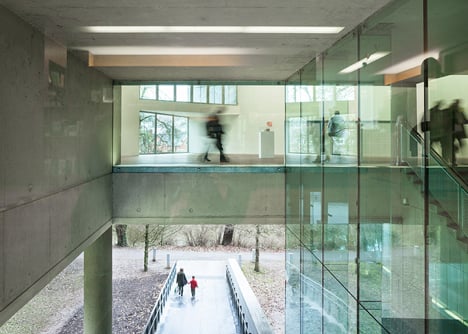
Amy Frearson: This idea that the architect has a role in society – would you say that has been present throughout your career?
John Tuomey: It's a responsibility, I think. It's a very important part of what architecture is for. It's a very important part of what architecture contributes to. Architecture makes shape out of social life. So you have to live up to it.
Sheila O'Donnell: Everyone experiences it. We really like the idea that a role might include building society – so doing schools or social housing always seems like a really meaningful branch of work. We're building the stuff that is part of everybody's everyday life, and trying to enhance the city and the world through that.
Amy Frearson: How would you describe the state of the architectural industry in Ireland at the moment?
Sheila O'Donnell: It's very bruised, I think. It has been really, really difficult, and it's not over, the recession. But actually, the architectural culture is really healthy and really strong. There are really good people there, two or three generations below us maybe. And young people who are actually, in the last few years since the recession started, beginning to do projects for the city and do things that they're not commissioned to do. It's very sad because a lot of people who are in their 40s just can't get institutional work because the procurement methods are so ludicrously restrictive. But I would say that if someone reorganised it and set up good procurement methods, we'd have a really thriving culture – a really strong, committed, intelligent and aware architecture, which wasn't the case in the past when we were students. It was very much a business and nobody talked about the city and the meaning of things.
So things are really beginning to improve and we're hoping they will continue to.
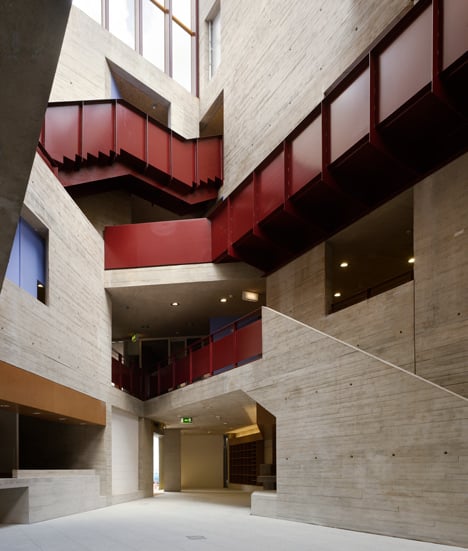
John Tuomey: Ireland suffered very greatly in the boom. There were a lot of bad buildings built in mostly the wrong places. So if you have the wrong thing in the wrong place then that's carelessness, I suppose. And now, in the recovery, it would be really proper if those gifted people would get access to the work. It would be a shame if it just reverted to business as usual. People don't always learn by their mistakes. It would be a pity if that was the case. There is an opportunity to be a bit more strategic or intelligent about the way things are made. The bust was bad, but the boom was bad.
Sheila O'Donnell: It was very bad for the city. Having said all of that about all of the talented architects, none of those people I am talking about got the really big projects built in the boom. People were doing very good houses or housing projects, or schools. But the big stuff was not being done by the good people.
Amy Frearson: So you're saying that sometimes more good people and good ideas emerge during a crash than during a boom?
John Tuomey: Yes. I suppose there's a bit of a shock. There's also a feeling of needing to rethink the order of things. And the space to think about that. However, architecture is a practical and physical reality and architects need to be able to do it – they need access to it.
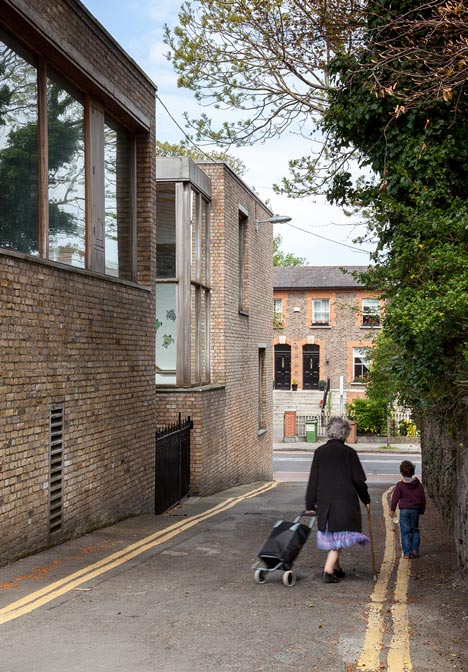
Sheila O'Donnell: Someone needs to ask them the questions, and I think that's the biggest frustration of being an architect, is that you have to wait for someone to ask you, or you have to go out and try to find someone to ask you, but in the end – unlike other arts – you can't just generate it yourself.
John Tuomey: Maybe it's an important thing to say, now we have been given this medal for, as you have just said, a continuity of work across our career. The reality of that is that every single building that we have made that has been noticed was a building type that we were doing for the first time. Ranelagh School was shortlisted for the Stirling – that was the first school we ever did. We've always been in that lucky position of thinking things out from the beginning. So, if you want something done well maybe you should give it to someone who has never done it before!
The trouble is now that clients are checking to see how many times you have done something before. And that might create two conditions: it might create people who are weary of doing the same bloody thing, and it might also give you people who have repeatedly done it wrong. But people who have never done it before will give it special attention. I think we should introduce some new criteria, which is only to select people who have never done something before!
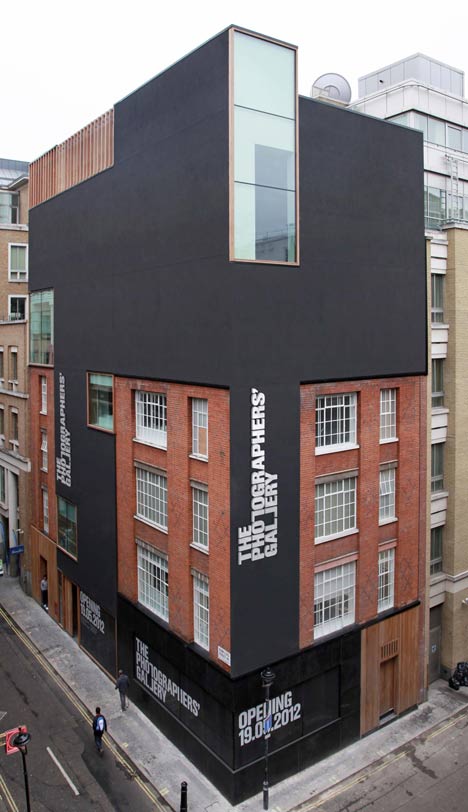
Sheila O'Donnell: Even if you've only done something before once, that's often not enough. We can't get on the list for university buildings. We've done the LSE but that's the only one. We've done others but they're too long ago. It's just funny... it's regulation. It's worldwide regulation. European regulation has, sometimes, a very stifling effect on creativity.
John Tuomey: It's not heart surgery, you know? If you go to a heart surgeon, you're absolutely hoping that he has done it before! But architecture is not heart surgery.
So the John Soane house is a really good museum. And some museums should feel more like houses, you know? So if you want a good museum, maybe you should get an architect who has done a good house!